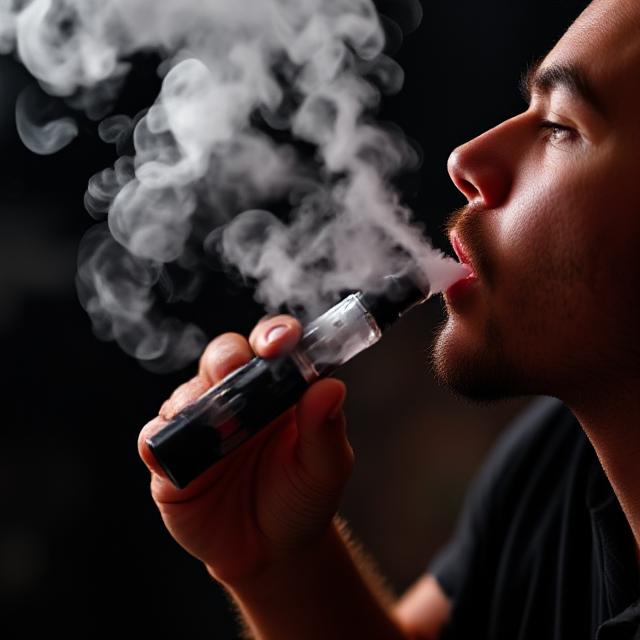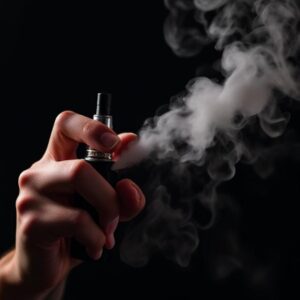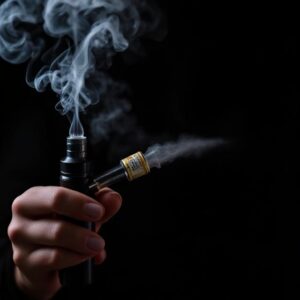Vape safety tips for beginners

Vape Safety Tips for Beginners: A Complete Guide to Safe Vaping
Vaping has become a popular alternative to smoking, offering a range of flavors, devices, and nicotine levels. However, for beginners, it’s essential to prioritize safety when starting the journey. From choosing the right device to understanding e-liquids and battery handling, knowing how to vape safely will ensure a smooth and enjoyable experience.
In this comprehensive guide, we’ll walk you through key Vape Safety Tips for Beginners that every beginner should know — so you can avoid health risks, device malfunctions, and common mistakes.
Understanding Vaping: What Beginners Should Know
Before diving into safety tips, it’s important to understand what vaping involves and how the devices work.
What Is Vaping?
Vaping involves inhaling vaporized e-liquid using a device called an e-cigarette or vape. The e-liquid typically contains:
-
Propylene glycol (PG)
-
Vegetable glycerin (VG)
-
Nicotine (optional)
-
Flavorings
The device heats the liquid to create a vapor, which is then inhaled.
Basic Components of a Vape Device: Vape Safety Tips for Beginners
Most vape devices include:
-
Battery: Powers the device
-
Tank/Pod: Holds the e-liquid
-
Coil: Heats the e-liquid
-
Mouthpiece: Where the vapor is inhaled
Understanding these parts helps in proper use and maintenance.

Vape safety tips for beginners
Top Vape Safety Tips for Beginners
1. Buy From Trusted Brands and Retailers
Always purchase your vape devices and e-liquids from reputable manufacturers or certified vape shops. Cheap or counterfeit products can be unsafe and may:
-
Overheat or explode
-
Leak e-liquid
-
Contain harmful ingredients
Tip: Look for devices that have passed safety certifications like CE or RoHS.
2. Choose the Right Device for Your Experience Level
Beginners should start with simple devices like:
-
Disposable vapes
-
Pod systems
-
Entry-level vape pens
Avoid advanced box mods or mechanical mods until you gain experience, as they require more technical knowledge and safety precautions.
3. Use the Correct Charger and Follow Charging Guidelines
Using the wrong charger or overcharging your vape can lead to battery damage or even explosions.
Charging Safety Tips:
-
Use the charger that came with your device
-
Never leave your vape charging overnight
-
Keep away from flammable surfaces
-
Do not use damaged USB cables
Note: Lithium-ion batteries, commonly used in vapes, must be handled carefully.
4. Learn About Battery Safety
If you’re using a vape with a removable battery, follow these guidelines:
Do:
-
Use high-quality batteries from known brands
-
Store batteries in protective cases
-
Keep away from keys or coins
Don’t:
-
Use damaged or torn battery wraps
-
Overcharge or completely drain the battery
-
Carry loose batteries in your pocket
5. Store E-Liquids Properly
E-liquids should be stored safely to maintain quality and prevent accidents.
Storage Guidelines:
-
Keep bottles out of reach of children and pets
-
Store in a cool, dark place
-
Tightly seal caps to prevent leaks
-
Never ingest e-liquid directly
Nicotine is toxic in high doses, especially when swallowed or absorbed through skin.
Inhalation and Usage Safety
6. Understand Proper Inhalation Techniques
Using the wrong inhaling technique can lead to coughing or discomfort. There are two main styles:
-
Mouth-to-Lung (MTL): Suitable for beginners. Mimics the sensation of smoking. Inhale vapor into the mouth, then into the lungs.
-
Direct-to-Lung (DTL): Used in advanced devices. Inhale vapor directly into the lungs for bigger clouds.
Start with MTL for better control and a smoother experience.
7. Avoid Chain Vaping
Taking continuous puffs without allowing time between draws can overheat your coil and irritate your throat.
Tip: Take slow, steady puffs and allow the coil to cool between hits.
8. Watch for Signs of Dry Hits or Burnt Coils
Dry hits occur when there’s not enough e-liquid on the coil. Burnt coils produce a harsh taste and may release harmful chemicals.
To avoid this:
-
Always keep your tank at least half full
-
Prime new coils before use (let the e-liquid soak in for 5–10 minutes)
-
Change coils regularly (usually every 1–2 weeks, depending on usage)
Health and Hygiene Tips for Vaping
9. Keep Your Device Clean
A dirty device can cause malfunctions and harbor bacteria.
Cleaning Checklist:
-
Wipe the mouthpiece regularly
-
Clean the tank with warm water when changing flavors
-
Use a cotton swab or cloth to remove e-liquid residue
10. Stay Hydrated
Vaping can cause dry mouth or dehydration, especially with high-PG e-liquids.
Tips: Vape Safety Tips for Beginners
-
Drink water regularly while vaping
-
Use e-liquids with a higher VG ratio for a smoother vape
11. Take Breaks From Vaping
Over-vaping can lead to nicotine overconsumption, causing symptoms like:
-
Dizziness
-
Nausea
-
Headaches
-
Rapid heart rate
Always monitor how much you’re vaping and take breaks throughout the day.
12. Know Your Nicotine Tolerance
If you’re new to vaping, start with a lower nicotine strength (e.g., 3mg or 6mg in freebase, or 10mg in salt nic). Using too much nicotine can be uncomfortable and addictive.

Vape safety tips for beginners
Recognizing and Preventing Device Malfunctions
13. Check for Leaks and Damage
If you notice e-liquid leaking:
-
Check the coil and tank seals
-
Don’t overfill the tank
-
Make sure everything is screwed in tightly
Also, don’t use devices with:
-
Cracked glass
-
Loose connections
-
Swollen batteries
14. Keep Firmware and Devices Updated
Some vapes (especially box mods) come with firmware updates for better performance and safety. Refer to the manufacturer’s website for updates and instructions.
15. Follow Manufacturer Guidelines
Each device has specific safety instructions. Read the user manual and follow all maintenance, usage, and storage recommendations.
Remember: No two vapes are the same. Know your device!
Legal and Social Awareness: Vape Safety Tips for Beginners
16. Respect Vaping Laws and Policies
Before vaping in public places, always check local laws and regulations. Many areas treat vaping the same as smoking, especially indoors.
17. Don’t Share Your Vape
Sharing devices can spread germs and illnesses. It’s best to use your personal device and mouthpiece to maintain hygiene.
When to Seek Medical Help
18. Know the Signs of Vaping Illness
Although rare, some people may experience adverse reactions to vaping. Seek medical help if you experience:
-
Chest pain
-
Breathing difficulty
-
Persistent cough
-
Severe allergic reactions
Also, if you ingest e-liquid accidentally or if a child/pet does, call emergency services immediately.
Final Thoughts: Start Safe, Vape Smart
Vaping can be a satisfying and safer alternative to smoking — if done responsibly. For Vape Safety Tips for Beginners, the key to success lies in choosing the right device, maintaining it properly, and being mindful of your health and surroundings.
By following the vape safety tips outlined in this guide, you’ll not only enhance your vaping experience but also protect yourself and others around you.

Vape safety tips for beginners
Frequently Asked Questions (FAQs): Vape Safety Tips for Beginners
Q1: Is vaping safer than smoking?
Yes, studies suggest vaping is significantly less harmful than smoking traditional cigarettes, but it is not risk-free.
Q2: How often should I change my vape coil?
Every 1 to 2 weeks, depending on usage. Signs include a burnt taste, low vapor, and gurgling sounds.
Q3: Can I vape without nicotine?
Absolutely. Many e-liquids are available in 0mg nicotine for those who want to enjoy the flavor and experience without addiction.
Q4: Is it okay to charge my vape overnight?
No. Overcharging can damage the battery or increase the risk of overheating. Unplug your device once fully charged.
Q5: What is the safest vape for beginners?
Simple pod systems or regulated devices from reputable brands like Vaporesso, Uwell, or VOOPOO are great starting points for safety and ease of use.
